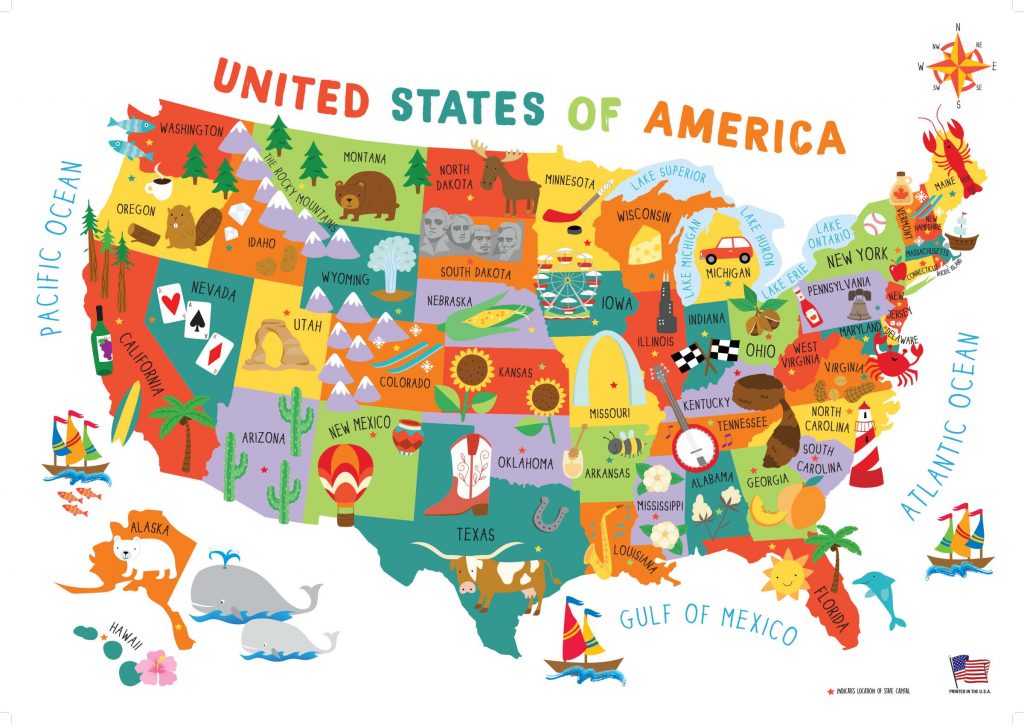The United States of America is a federal union of 50 states, in addition to non-state territories such as the District of Columbia and other territories in the Pacific Ocean and the Caribbean Sea. Each of these states has autonomy (public education and health, transportation …) and shares sovereignty with the federal government, although according to the Constitution, each state must transfer certain powers to the central government and no state has the right to separate from the USA.
In all the United States, the official language is English, although there are states with a co-official language such as Louisiana (French), Hawaii (Hawaiian) or New Mexico (Spanish). Each state can organize its government in its own way, as long as they abide by the democratic norms regulated in the Constitution. Throughout the history of the nation, almost all states adopted a form of government in the image and likeness of the federal government, dividing the three powers, although nothing prevents a legitimate parliamentary government with a fusion of powers. A unique case in this regard is the State of Nebraska, which, unlike the other states, only has one chamber. Each state is thus a single sovereign political entity belonging to a confederation, with powers legitimized and recognized by international law, such as declaring war or maintaining international relations.
Birth and Annexation of States in the USA
The original thirteen states (the Thirteen Colonies) that rebelled against the British Empire were the first to gain their sovereignty after independence. Shortly after, others emerged from existing ones (Kentucky, Tennessee, Maine) or in most cases, from territories obtained during wars of conquest or by their purchase by the government. These territories were vast lands under the sovereignty of the federal government, with a settled population, but which were not organized into states until they achieved a certain self-government. Only Vermont, Texas, and Hawaii possessed the status of independent republics prior to their annexation to the United States.
Eleven states emerged from the Civil War, but only West Virginia, separated from the original Virginia, was divided at the end of the war. Certain states were slow to achieve annexation to the Union. This is the case of Texas, which was at war with Mexico in 1836, and did not become part of the United States until 1845. Or Utah, which due to religious differences with the Mormon elite belonging to the Church of Jesus Christ of Latter-day Saints Dias, a practitioner of polygamy, did not take several decades for his annexation request to be accepted.
Other Territories
In addition to the 50 states that make up the United States of America, there are other territories, populated or not, that are part of the Nation.
A unique example is the District of Columbia, federal territory where the capital, Washington, is located, with all federal headquarters and government institutions. Apart from this territory, the United States annexed lands in the Caribbean throughout its history, such as Puerto Rico or the Virgin Islands of the United States, or in the Pacific Ocean, in the case of the Northern Mariana Islands, Guam, Samoa. Americana, Midway Atoll, Johnston Atoll, Wake Island, Kingman Reef, Jarvis Island, Baker Island, Howland Island, Navaza Island. Citizens of these territories have US nationality and have the same rights and duties as any citizen, although in most cases, they are exempt from paying federal taxes, do not have the right to vote in presidential elections and are only represented in the Congress as observers. Palmyra Atoll in the Pacific Ocean is uninhabited, but is part of the country as a US territory.
Other previously North American territories, such as the Federated States of Micronesia, Palau or the Republic of the Marshall Islands, achieved independence from the federal government, establishing themselves as sovereign states with their own government.
The 50 States

Throughout the history of the United States, states were created or annexed from 1787 onwards. Some are historically called Commonwealths, without any apparent legal difference with the rest of the states.
Unrecognized States
Franklin’s status was never recognized by the Union, until it was finally claimed by North Carolina. Many states voted for its recognition, but the two-thirds necessary for the admission of a new state of the confederation were not obtained. This territory is currently part of the state of Tennessee. Another state proposed on numerous occasions (most recently in 2005) is Lincoln, which would be formed by the territories of northern Idaho and eastern Washington. In 1859 the creation of the state of Jefferson, in the Rocky Mountains of the South, was proposed, but finally it ended up in Colorado. Another Jefferson, in a rural area in northern California and southern Oregon, was proposed for state in 1941. New proposals for territorial reorganization and the creation of new states continue to be produced today. The strongest claim today is to make Puerto Rico the 51st state of the Union.
